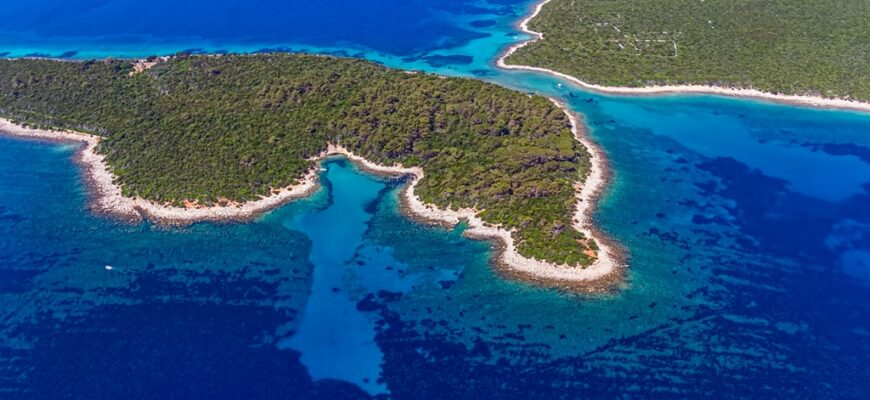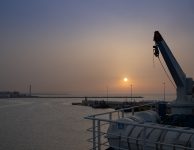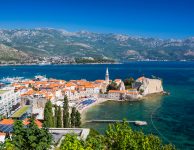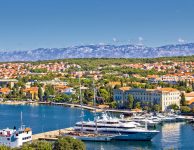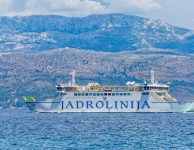Tourist season on Kvarner islands still in full swing
While many tourists left during the last weekend, the season on all Croatian islands still lasts. This year, Croatia did not have overbookings, tourist destinations were not overcrowded, but the increase in the number of people infected with COVID-19 put us on the red list of the Dutch, British, Slovenians, Austrians, and segmentally our most loyal Germans.
The coronavirus pandemic reduced air travel, which always benefited the most visited Istria and Kvarner, but Dubrovnik, as a predominantly air destination, ended August at the back of Croatian tourist regions, somewhere alongside Lika-Senj County. The Kvarner islands, all in a row, achieved results above their expectations, and we also have the island of Rab as the “corona free zone”.
We still have tourists, it feels like the tourist season is still going on. Most are Germans, but there are also Slovenians and Italians. The novelty this year is that Czechs and Hungarians are increasingly coming to us and booking the post-season period.
Ivana Matušan, Director of the Rab Tourist Board
For example, Rab town had 11,800 tourists on Thursday, 10,900 on Friday and 8,500 on Sunday, which is 55% of overnight stays compared to the same day last year. Looking at August, the City of Rab is at 75% of last year’s results.
When it comes to the Municipality of Lopar, there are currently 4,470 tourists which is 56% compared to last year, which is a thousand fewer guests than on Thursday last week, and most of them were Austrians and Slovenians. In the previous part of August, Lopar achieved almost 73% of last year’s results.
Matušan adds that we can be satisfied with the results of the realized tourist traffic, considering the pessimistic announcements at the very beginning of the tourist season, when we planned traffic of 35% compared to last year.
Guest structure
The director of the Lopar Tourist Board Marin Mušćo explained that the most numerous in the structure of guests are traditionally Germans, and it is interesting that in the last days after the Germans, most are Czechs, about 10%, and Croats, also 10%. Austrians and Slovenes, who otherwise participate in tourist traffic with about 10% each, currently have 2% each.
Announcements for September are good, although the San Marino resort is likely to close earlier than planned. There are a lot of cancellations of reservations and the uncertainty is great because the situation is changing from day to day.
When it comes to Mali Losinj, there are currently 11,000 guests which is 47% compared to last year.
We can see a decline in guests since the introduction of special measures of entry into Italy, Austria, and now Slovenia. Every day we have a thousand fewer guests. For example, on August 14, we had 19,631 registered guests. Currently, the island of Lošinj has the largest number of German guests, 3,415, followed by guests from Croatia, 2,342, 1,616 Slovenians, 1,042 Italians, 510 Czechs, Poles… and now there are 1,600 with a tendency to further decline, given the departures on Monday before the mandatory 14-day quarantine measures.
Dalibor Cvitković, Director of the Tourist Board of Mali Losinj
Zlatni otok is at the end of the season as well. It is said that booking has almost stopped, but tourist traffic is still moderately intense, although the decline in traffic is very noticeable.
Increase in domestic tourism
The director of Krk Tourist Board Majda Šale says that in total, there were slightly less than 4,000 arrivals on Krk on Sunday, August 23rd, which is half of last year’s result. She also adds:
Domestic guests rose in statistics, in July even by 20% in arrivals and 3.8% in overnight stays, while in August they broke into third place with a share of 12%. In the first half of August, the Slovenians came in second place, and in August it was customary for the Italians to be in first place. The Germans, who are also the most represented in terms of the number of arrivals and overnight stays, kept the share of 35%, for example, in July, guests from Germany had only 2.6% fewer arrivals compared to last year and 8% fewer overnight stays than last year. It is also noticeable that the guests stayed longer on the island of Krk, compared to last year, 6 days on average, and for the most part they came individually, as many as 83% of them.
Generally, about 2.3 million arrivals and 17.6 million overnight stays have been made in Croatia so far in August which is 67% of last year’s result achieved in the same period in terms of tourist overnight stays. The highest number of overnight stays in the same period was realized in Istria, which recorded 4.3 million overnight stays, in Kvarner 3.5 million overnight stays, in Split-Dalmatia County 3.4 million overnight stays, Zadar 3.2, Šibenik-Knin 1.4 million overnight stays, Dubrovnik-Neretva 999,000 and Lika-Senj County 636,000 overnight stays.
In the current part of August, most tourist overnight stays were realized from the German market, about 4.3 million, which is 90% of last year’s result. This is followed by the domestic market with 3.3 million overnight stays, which is the result of last year’s level in the same period, the Slovenian market with 2.6 million overnight stays, which is 94% of last year’s result, and the Polish market with 1.8 million overnight stays, an increase of 5% over the same period last year. From January 1 to August 22nd, a total of 8,855,337 overnight stays were realized in Kvarner, which is 61% compared to the same period last year.
Source: Novilist.hr


